Authors – Healy Hamilton (NatureServe, Chief Scientist), Bruce Young (NatureServe Chief Zoologist) and Regan Lyons Smyth (NatureServe, Director, Spatial Analysis), Sean Breyer (Esri, ArcGIS Living Atlas Program Manager)
Where in your state would a new nature preserve help most to prevent species extinctions? It’s a hard question to answer, isn’t it? First, you need to consider which plants and animals are close to extinction. Then you need to know where they live. Finally, you would want to know the degree to which they are already conserved in existing protected areas. These are the types of challenges planners, conservation groups, and private conservation landowners must understand to make good land stewardship decisions. Don’t worry if these calculations are too hard to do in your head. NatureServe’s new Map of Biodiversity Importance gives you the information you need to answer this question and many more.
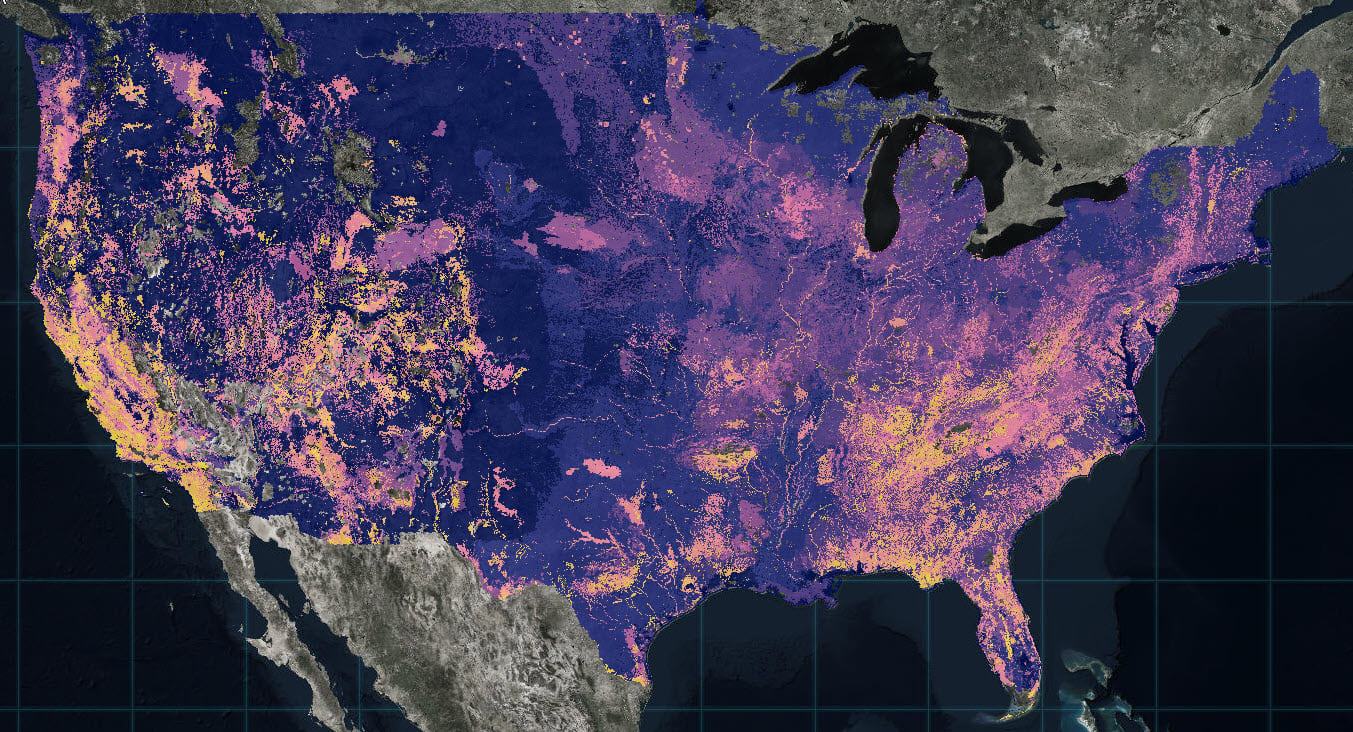
The Map of Biodiversity Importance (MoBI) uses outputs from habitat suitability models for 2,216 of the most imperiled species in the lower 48 United States, and information on range size and degree of protection derived from those models, to create a series of maps to inform conservation efforts. The maps highlight areas with concentrations of imperiled, small-ranged species that fall outside of the existing protected area network. The MoBI layers are designed to be used in concert with other factors that you might want to consider when prioritizing land protection such as real estate costs, distance from roads, or habitat connectivity. They can help local communities understand the biological resources in their backyard and serve as an input into existing tools for reserve design and selection.
Resolution to guide site-scale conservation
Until now, most continental-scale “gap” analyses, as these explorations of protection needs are often called, started with coarse polygon range maps such as what you would find in a field guide. Although helpful for showing roughly which areas might need protection, the results were not designed for finer-scale analyses – the type needed for local decision-making. The Map of Biodiversity Importance is different, in that it starts with fine-scale habitat models for each imperiled species. Those habitat maps are aggregated in 990-m raster products that identify the specific areas most valuable for species conservation efforts.
The MoBI maps highlight specific rivers teeming with threatened biodiversity

…and can pinpoint small areas that may be the last remaining locations for species that exist nowhere else in the world.
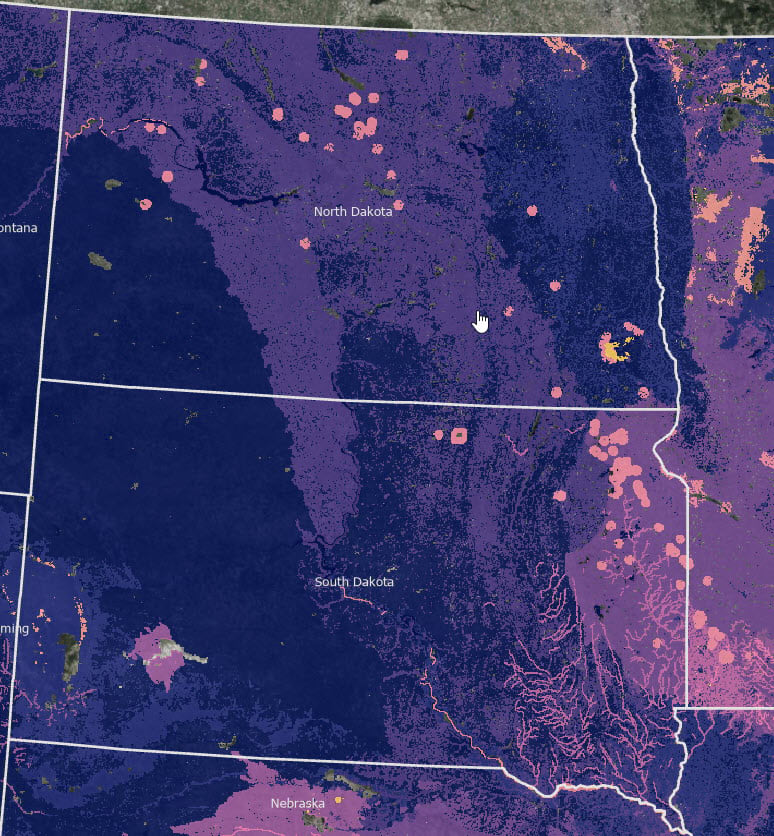
Three layer classes to choose from
Recognizing that people differ in the factors they want to consider when identifying land protection opportunities, the MoBI maps come in three classes to suit your needs. The protection-weighted range-size rarity map combines the data from the habitat models with information on what is already protected (using PAD-US 2.0) to identify areas of importance for conservation. I know, “protection-weighted range-size rarity” is a mouthful. Think of it as a measure of how urgently land and water protection is needed to prevent extinctions. High values identify areas where more unprotected, small-ranged species are likely to occur.
Here’s what this looks like for the state of Georgia. You can see how pockets of unprotected, small-ranged species occur throughout the state, but are densest in the northwestern corner of the state.
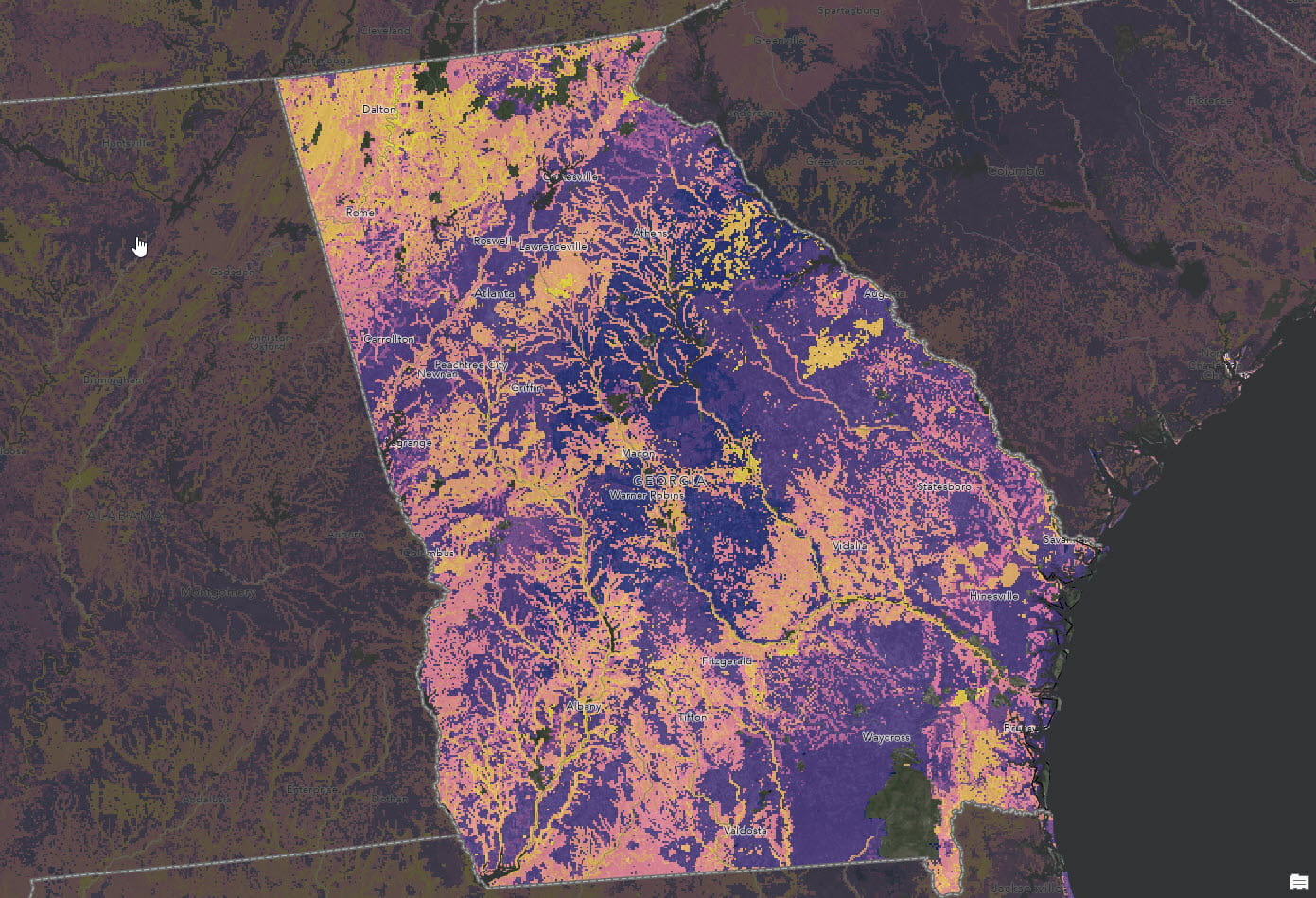
You might be more interested in a simplified summed range-size rarity map. In this layer, the inverse of the range size (i.e., one divided by the range size) is calculated for each species and then these values are summed for all species that overlap each pixel in the layer. Without accounting for protected areas, this layer shows concentrations of all species with the smallest range sizes. For Georgia, the northwestern corner is again highlighted, but note also the river networks that harbor many highly endemic freshwater species.
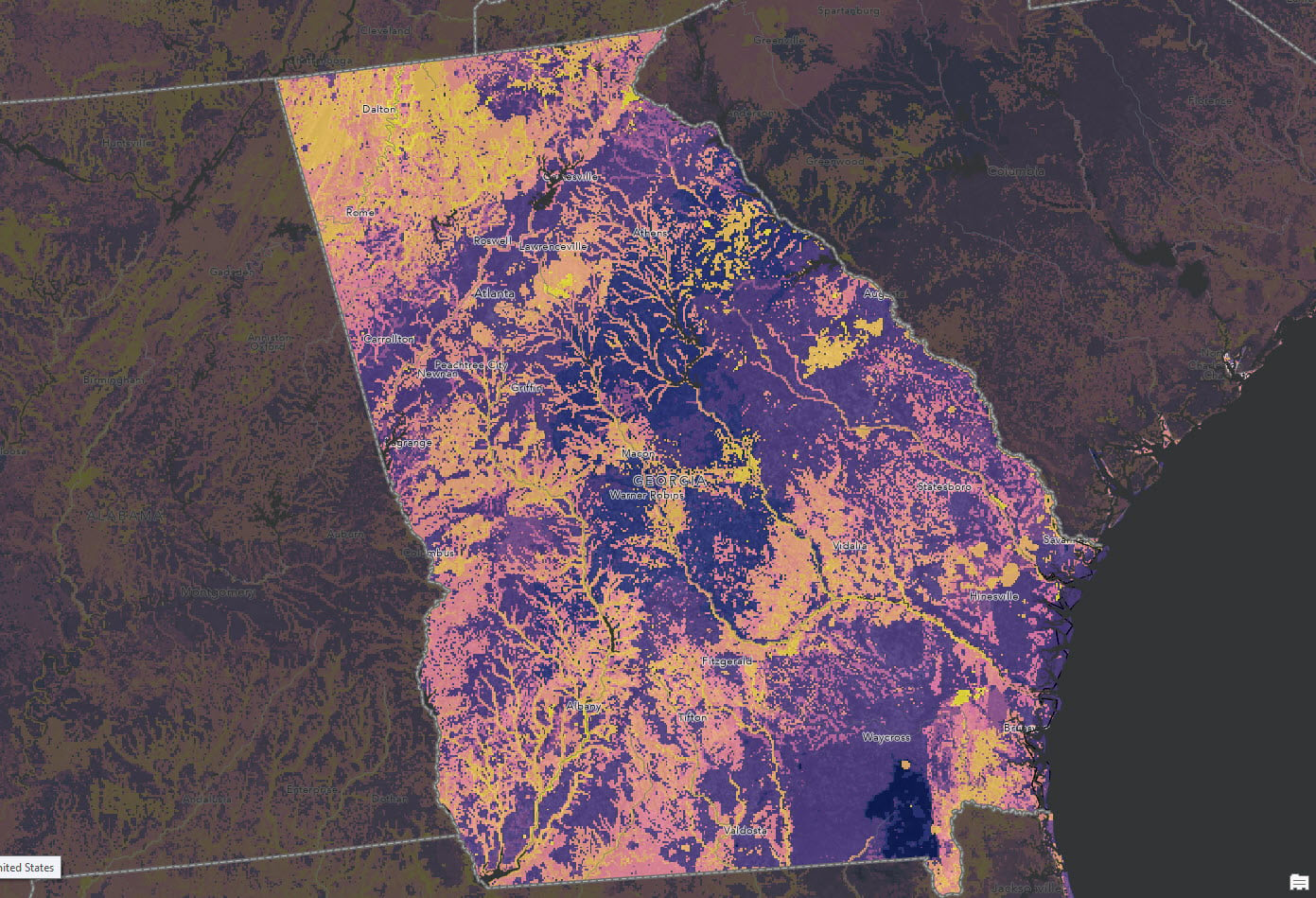
Finally, you might need a plain vanilla map of species richness for imperiled species. You can find a MoBI map for that too. The richness of imperiled species map shows where there are concentrations of the 2,216 imperiled species modeled in the MoBI project. Although northwestern Georgia still lights up as having an important concentration of imperiled species, most of the rest of the state outside of the Flint River drainage in the southwestern corner shows low values.
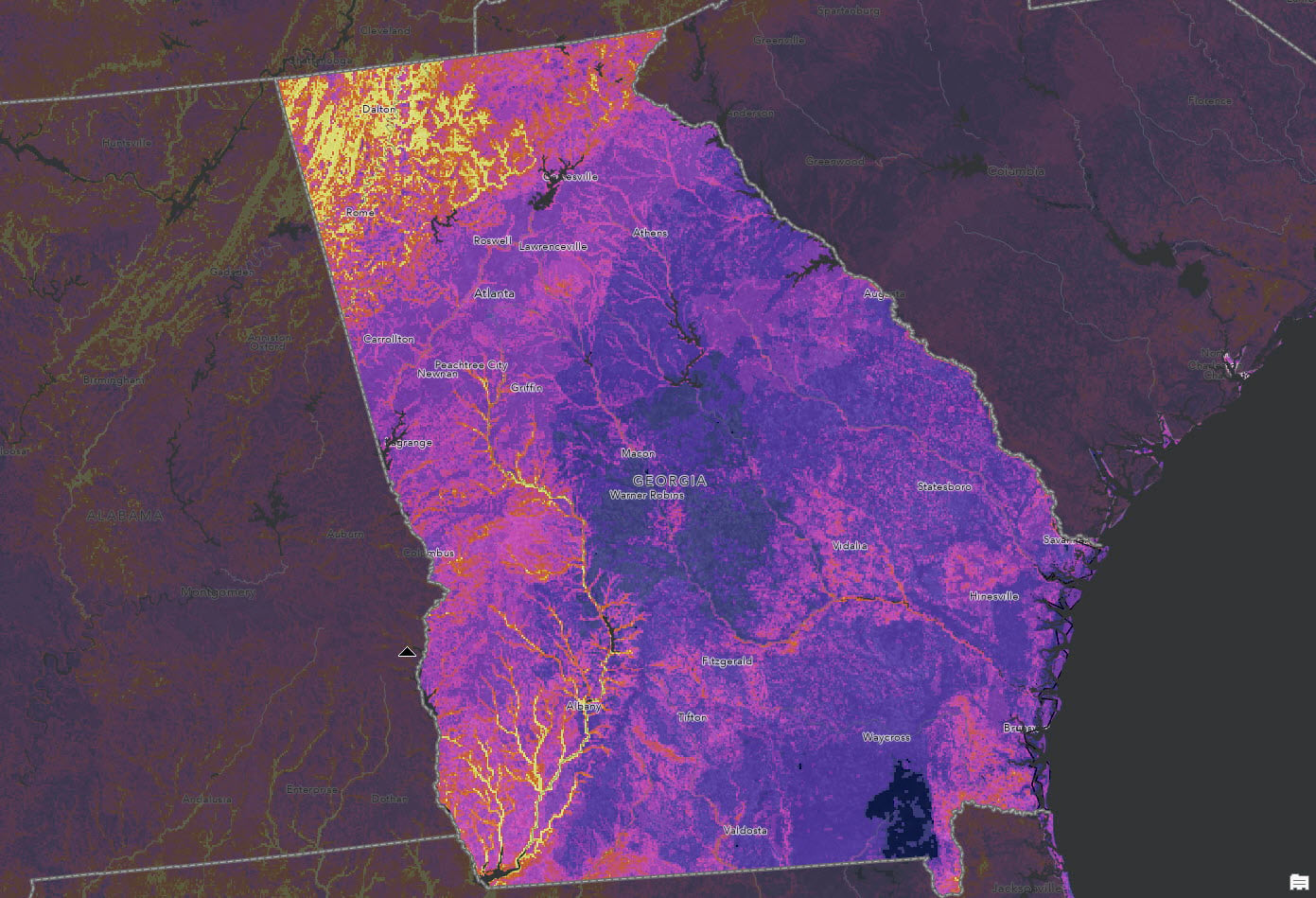
Why the contrast from the previous maps? The imperiled species in Georgia mostly have small ranges that don’t overlap much. The protection-weighted range-size rarity and summed range-size rarity maps emphasize places with small-ranged species, which happens to occur in many places in the state. Without much overlap of these ranges, most of the state has low richness values as shown in the third map.
Yes, animals and plants
Okay, so what kinds of species make up the MoBI maps? The inputs include habitat models for species listed as Endangered or Threatened under the Endangered Species Act or those that have been identified by NatureServe as Critically Imperiled (Global Conservation Status of “G1”) or Imperiled (“G2”). These maps cover the continguous 48 states.
A major advantage of the MoBI maps is the diversity of animals and plants analyzed. Whereas most previous gap analyses in the US focused on vertebrates, the MoBI maps include not only vertebrates but invertebrates and plants as well. In fact, nearly three-quarters of the species matching the MoBI criteria are plants. Here’s the breakdown:
- Vertebrates (birds, mammals, amphibians, reptiles, freshwater fishes; 309 species)
- Freshwater invertebrates (mussels and crayfishes; 228 species)
- Pollinators (bumblebees, butterflies, and skippers; 43 species)
- Vascular plants (1,636 species)
MoBI layers are available for each of the four taxonomic groupings in each of the three layer classes (as well as all species combined) so that you can choose the group to suit your needs.
Now start exploring important places for biodiversity near you
You can find all of the MoBI maps on Esri’s Living Atlas of the World.
Commenting is not enabled for this article.